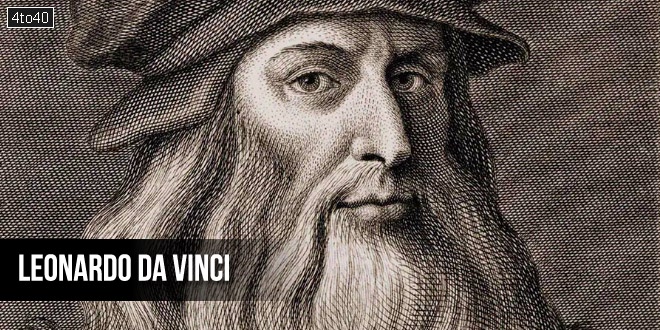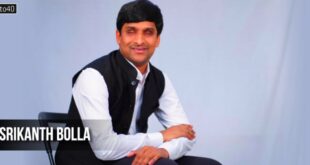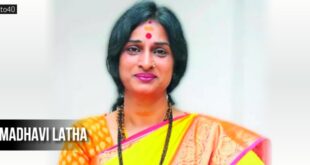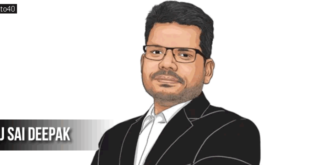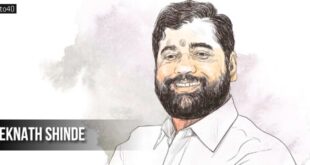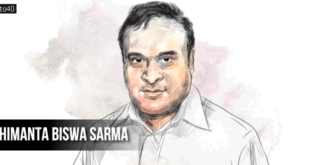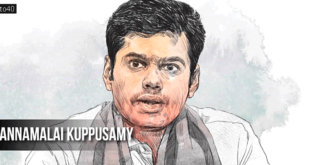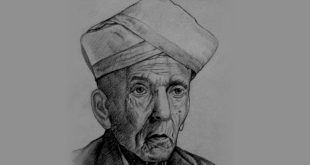Simply put, Leonardo da Vinci was an amazing man. He was an accomplished painter, a great inventor who designed a slew of stunning things, and a path-breaking scientist who was a bridge between the medieval times and modern approach. Particularly known for his masterly pieces The Last Supper and Mona Lisa, Leonardo da Vinci was a genius, of all times. Here is the short biography and profile of Leonardo da Vinci.
Leonardo da Vinci Biography:
| Name: | Leonardo da Vinci |
| Born: | 15 April 1452, Anchiano, Italy |
| Died: | 2 May 1519 (age 67 years), Château du Clos Lucé, Amboise, France |
| Place of burial: | Chapel of Saint-Hubert, Amboise, France |
| Periods: | Renaissance, Italian Renaissance, High Renaissance |
| Known for: | Engineers, Polymaths, Scientists, Inventors |
| Notable work: |
|
Childhood:
Leonardo was born on April 15, 1452, in Vinci, Italy, to Ser Piero, a notary, and Caterina, a peasant girl. Vinci was located in the lower valley of the Arno River in the territory of Florence. For his first five years, Leonardo lived in the nearby hamlet of Anchiano with his family which was comprised of his father, grandparents and uncle. In his childhood, Leonardo had access to scholarly texts owned by his family. He was also exposed to Vinci’s long standing painting traditions. When he was 15, his father apprenticed him to famous workshop of Andrea del Verrochio in Florence. As an apprentice, Leonardo got trained in diverse skills.
Leonardo was always hesitant in throwing light on his childhood. In all his accounts, very little is available about his childhood.
असली ‘जीनियस’
इतालवी जीनियस लियोनादों द विंची (1452 – 1519) को आमतौर पर एक चित्रकार, शरीर रचना विज्ञानी (एनाटोमिस्ट), मूर्तिकार तथा भवन निर्माण कला के विशेषज्ञ के तौर पर ही जाना जाता है। उनके द्वारा बनाई गई पेंटिंग्स ‘द लास्ट सप्पर‘ तथा ‘मोनालीसा‘ की प्रसिद्धि सार्वकालिक है। विंची के बारे में बहुत कम लोग जानते होंगे कि वह एक महान आविष्कारक भी थे।
अपनी नोटबुक्स में उन्होंने असंख्य आधुनिक मशीनों की योजनाएं भी लिख छोड़ी थीं। उनकी अधिकांश योजनाओं का वर्णन ‘सीक्रेट मिरर राइटिंग‘ में लिखा गया है। हालांकि इनमें से बहुत सारी मशीनें नहीं बनाई जा सकों, परंतु उनकी नई रचनाओं के आधार पर कई आधुनिक मशीनों की खोज की गई थी।
उनकी योजनाओं में जिन मशीनों का विवरण मिलता है, उनके आधार पर ये मशीनें निर्मित की गई हैं – एयर कंडीशनर, अलार्म क्लॉक, बॉल बीयरिंग, घंटों तथा मिनटों की सुइयों वाली घड़ी, क्रेन, फ्लाइंग मशीन, गैस मास्क, गियर्स, हैलीकॉप्टर, मैग्नेटिक कम्पास, पैराशूट, रिवाल्विंग स्टेज, स्क्रू बनाने वाली मशीन, चश्मा, स्टीम इंजन, टैलीस्कोप, वाटर क्लॉक, वाटर टर्बाइन तथा कई अन्य। ऐसी हो प्रतिभा को तो वास्तविक जीनियस कहा जाता है।
अब आपका परिचय कुछ ऐसी खोजों से करवाते हैं, जो बिल्कुल असाधारण थीं। हालांकि ऐसी खोजों का कोई अंत नहीं है, फिर भी इनमें शामिल हैं- एक भद्र पुरुष, जिसके दोनों हाथों में चीजें पकड़ी हों, के लिए स्वयं उठने वाला हैट (1896) (पश्चिमी देशों में हाथ से हैट उतारकर अभिवादन करने की परम्परा है), एक ऑटोमैटिक हेयर कटर (1951) तथा एक मोटराइज्ड आइसक्रीम कोन, जो सेवन करने वाले की जीभ पर घूमता था।
Leonardo da Vinci as Artist:
Leonardo, a God-gifted artist, had his skills honed at the workshop of Verocchio. With time, he surpassed his master. By the time Leonardo reaching his twenties, he became a famous painter. Leonardo sought a universal language in painting. With realistic elements, Leonardo created faithful renditions of life. Leonardo’s decision to paint things realistically was bold, for the times were dominated by highly figurative and downright strange religious paintings. He became a beacon for the painters of the coming century.
Leonardo gave his paintings the soft, lifelike quality that made older paintings look inferior. With his genius, Leonardo created atmosphere and depth in his paintings. Leonardo turned to science for improving his artwork. His knowledge of nature and anatomy emerged in his stunningly realistic paintings. His drawings of human body paved the way for remarkably accurate figures. Leonardo believed that a painter must know not just the rules of perspective, but also the laws of nature. Painter is the best person to illustrate the laws of nature.
Two of his most famous paintings are Mona Lisa and The Last Supper. Mona Lisa is known for her mysterious smile while The Last Supper is praised for experimental technique. Michelangelo, another great artist, was the competitor of Leonardo.
Inventor:
For supporting himself, Leonardo adapted his drawing skills to the fields of architecture, military engineering, canal building and weapons design. A talented engineer, Leonardo planned to create new machines for a new world. All his life, he nurtured brilliant and far-reaching ideas, ranging from the practical to the prophetic. He proposed creating a dry route across the Gulf of Istanbul, connecting the Golden Horn and the Bosporus with a bridge! Though the project was not taken up at that time, modern engineers have determined that the bridge would have been completely sound. Such was Leonardo’s genius.
An array of Leonardo designs were based on gear. His designs included the bicycle, a helicopter, an automobile, and some strange weapons. He made plans for a device to measure humidity, a steam-powered cannon, different waterwheels, and industrial machines powered by flowing water. He made some ambitious plans to revitalize Milan with canals.
Scientist:
As a scientist, major contribution of Leonardo was bridging the gap between the medieval times and modern way of doing things. His studies in anatomy and fluids proved his predecessors wrong. The range of topics which he studied is surprising: anatomy, zoology, botany, geology, optics, hydrodynamics, aerodynamics and much more. Leonardo was influenced by the writings of the ancient Greeks and Romans. However, he knew the limitations of these and took the approach of observing nature and posing logical questions.
Leonardo possessed the ability to observe nature and record it. His studies heralded the birth of the systematic, descriptive method of scientific study.
Professional Profile:
Leonardo began his professional life in famous workshop of Andrea del Verrochio in Florence. As an apprentice, Leonardo got trained in diverse skills. Baptism of Christ was collectively painted by Verrochio and Leonardo. By 1472, Leonardo qualified as a master artist in the Guild of St Luke.
Leonardo developed his own workshop in Florence between 1476 and 1481. In 1478 he was commissioned to make an altarpiece for the Chapel of St Bernard. In 1482 Leonardo created a silver lyre in the shape of a horse’s head. Thereafter, he relocated himself in Milan where he painted two of his most famous works: Virgin of the Rocks and The Last Supper.
Leonardo returned to Florence in 1500. In 1502 Leonardo entered the service of Cesare Borgia, the son of Pope Alexander VI, as a military architect and engineer. He spent two years painting a great mural of The Battle of Anghiari. In 1506, he went to Milan and thereafter, in 1513, to Rome. He fell ill and spent most of his time solving geometric puzzles. He could not recuperate and died quietly on the 2 May, 1519 just a few weeks after his 67th birthday.
Leonardo da Vinci: Timeline
| 1452 | Leonardo is born |
| 1467 | Leonardo reaches Florence to work as apprentice |
| 1472 | Accepted into the painters’ guild of Florence. |
| 1478 | The Annunciation is painted. |
| 1481 | Beginning of work on The Adoration of the Magi |
| 1482 | Leonardo moves to Milan |
| 1483 | Paints the Virgin of the Rocks |
| 1485 | Paints Lady with an Ermine |
| 1498 | The Last Supper completed |
| 1500 | Begins painting the Virgin and Child with Saint Anne |
| 1502 | Begins work as military architect and engineer |
| 1503 | Commissioned to paint the Mona Lisa |
| 1503 | Commissioned to paint a mural for the council hall in Florence |
| 1515 | Paints St. John the Baptist |
| 1519 | Death |
 Kids Portal For Parents India Kids Network
Kids Portal For Parents India Kids Network
